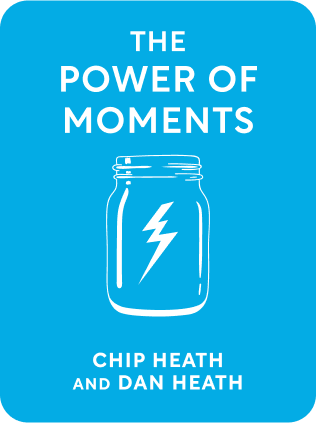

This article is an excerpt from the Shortform book guide to "The Power of Moments" by Chip Heath and Dan Heath. Shortform has the world's best summaries and analyses of books you should be reading.
Like this article? Sign up for a free trial here .
How do you establish a stronger connection in a relationship? What’s the key to deepening a relationship?
Contrary to what you might think, relationships do not naturally deepen or grow stronger over time. Without regular maintenance, relationships easily plateau—they won’t develop any further without a bit of engineering. A properly maintained relationship has positive peaks that serve as the defining moments that deepen the relationship.
Keep reading to learn about the key ingredient of a strong relationship.
Use Connection to Deepen Individual Relationships
Relationships are deepened in instances of responsiveness—moments of engagement with someone else that make it clear that you’re listening to and care about them.
Responsiveness conveys three essential messages:
- Support: I actively support you and will help you get what you want or need.
- Understanding: I know what’s important to you and who you are.
- Respect: I respect who you are and your wants or needs.
These three messages together accomplish the goal of responsiveness—to make someone feel special and seen. These positive feelings bolster emotional wellness and self-esteem and establish feelings of security in the relationship. Without responsiveness, relationships struggle and stagnate.
| How Does Responsiveness Contribute to Defining Moments? Part of the reason that instances of connection and responsiveness can be so memorable is that they’re novel experiences in our current world. In Lost Connections, journalist Johann Hari writes that people are spending less time than ever participating in meaningful, in-person social activities where they might establish connections with others—such as dinner parties or group outings. The problem is that our world is becoming increasingly connected online—which means our interactions are focused on superficial communication rather than a true, supportive connection. As we become more and more accustomed to communicating with messages, tags, and likes, the experience of true connection that comes from opening up to another person and receiving respect, support, and understanding in return stands out as a pleasant surprise. |
Responsiveness in Personal Relationships
In personal relationships, responsiveness is part of a formula: vulnerability + responsiveness = intimacy. In practice, this formula looks fairly simple: You share something (vulnerability) and then wait to see if the other person shares something in return (responsiveness). By choosing to respond, they express respect, understanding, and support.
The Heaths stress that intimacy doesn’t come from either responsiveness or vulnerability alone—it’s crucial that there’s an exchange between the two. When completed, this simple exchange opens up the possibility to continue sharing and learning about one another, to build intimacy and trust. In other words, it allows the relationship to progress instead of plateauing. It’s important to keep in mind that this exchange doesn’t happen naturally—someone needs to take the first step of vulnerability in order to start the cycle. If you want richer, deeper connections in your life, you must either be willing to be open with others or recognize when others are making the step to be open with you.
For example, you meet a girl on your first day of sleepaway camp. You reach out with vulnerability: “I’m nervous being so far from home for the first time.” Your relationship can develop in one of two ways:
- She doesn’t recognize your attempt at connection or chooses not to engage: “Oh. Well, you’ll get used to it.” The relationship that could have deepened to “best friends” screeches to a halt at “acquaintances.”
- She engages with your vulnerability and responds with her own: “Honestly, me too! I miss my parents a little.” You quickly become best friends because you both chose to complete the exchange of vulnerability and responsiveness, deepening the relationship.
| The Importance of Aligning Expression and Reception The Heaths’ approach to responsiveness is somewhat one-size-fits-all: Someone expresses vulnerability, and by expressing vulnerability in exchange, you reveal that you see them, care about them, and understand them. A crucially important point that this approach misses is that not everyone gives and receives support, understanding, and respect the same way. Many missed opportunities for connection and responsiveness come about because one person’s expression of care and understanding is misaligned with the other person’s reception of care and understanding. Once you know what makes someone feel seen, it becomes much easier to respond meaningfully to their attempts to connect with you. Gary Chapman’s The Five Love Languages is well-known for its lessons in determining what actions make you and those in your life feel seen and understood. The book focuses on the way we express love through five “languages”: acts of service, physical touch, words of affirmation, gifts, and quality time. Knowing someone’s love language means that when they open up to you, you can respond to their vulnerability in a way that aligns with the way they view understanding and care—thereby deepening your relationship. For example, your friend reveals to you that she’s behind on a project at work and is worried she’ll be fired if she doesn’t get it done. You reply with your love language, words of affirmation: You say, “That’s so stressful. You’re so organized, though—I know you can do it.” Rather than feeling understood, she feels that you’re just saying nice things as a way to brush off her concerns. You reply with her love language, acts of service: You say, “That’s so stressful. How about I pick up your kids from school each afternoon and feed them at my place? That way you can stay late at work without worrying. Let me know if I can do anything else.” Your friend feels understood and deeply connected to you because you’ve shown that you care in a way that makes sense to her. |
How Organizations Can Use Responsiveness In Client Relationships
It’s easy to understand how responsiveness supports personal relationships such as with your partner, your friends, or your colleagues. However, the Heaths point out that you might not realize how important it is to support your professional relationships with responsiveness. Doing so can help you better connect with the clients you interact with on a regular basis.
The Heaths reveal that treating your clients with responsiveness shows them that you understand and validate their feelings and makes for a satisfying experience that boosts their loyalty to your organization. On the other hand, canned responses—all too common in client services—create an unsatisfying, invalidating experience for clients.

———End of Preview———
Like what you just read? Read the rest of the world's best book summary and analysis of Chip Heath and Dan Heath's "The Power of Moments" at Shortform .
Here's what you'll find in our full The Power of Moments summary :
- How to make everyday experiences meaningful and memorable
- A look at the four elements that create meaning
- How your senses can play a role in elevating everyday moments






